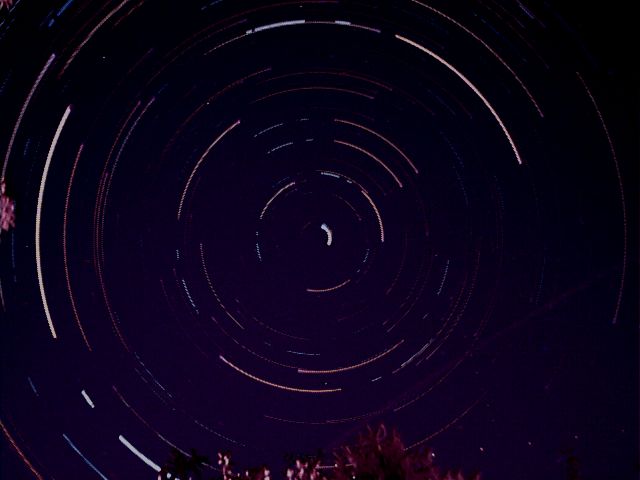

I set up my Vesta SC1 camera with its
original lens pointing at the pole star and left it collecting 60-sec exposures all
night (~6 hours). I was then able to produce this composite of the images showing the
apparent movement of the stars as the Earth rotates. Unfortunately the night
was not entirely free of clouds so I had to remove a few frames, which accounts for the
breaks in the trails. The smallest arc in the middle is, obviously, the pole star,
Polaris or α-Ursa Minor.
If you move your mouse over the picture, you will see the names of those stars in Ursa
Minor that have greek-letter designations plus γ-Cephei in the constellation of Cepheus.
η- and θ-Ursa Minor are quite faint (about 5.1) and may be difficult to see.
There are other bright stars in the area but they only seem to have HR (or similar)
designations.
The colour balance of the camera was on Auto so I assume that the colours are about right;
generally these stars are too faint for the eye to see the colours.

Date and Time
15 - 16th August 2005 20:52 to 03:17 UT
Camera
Modified Vesta 675K
Telescope
Original Vesta lens
Capture
K3CCDTools. Mid gamma, 60", 0% gain
Processing
K3CCDTools. Sum if lighter
Home